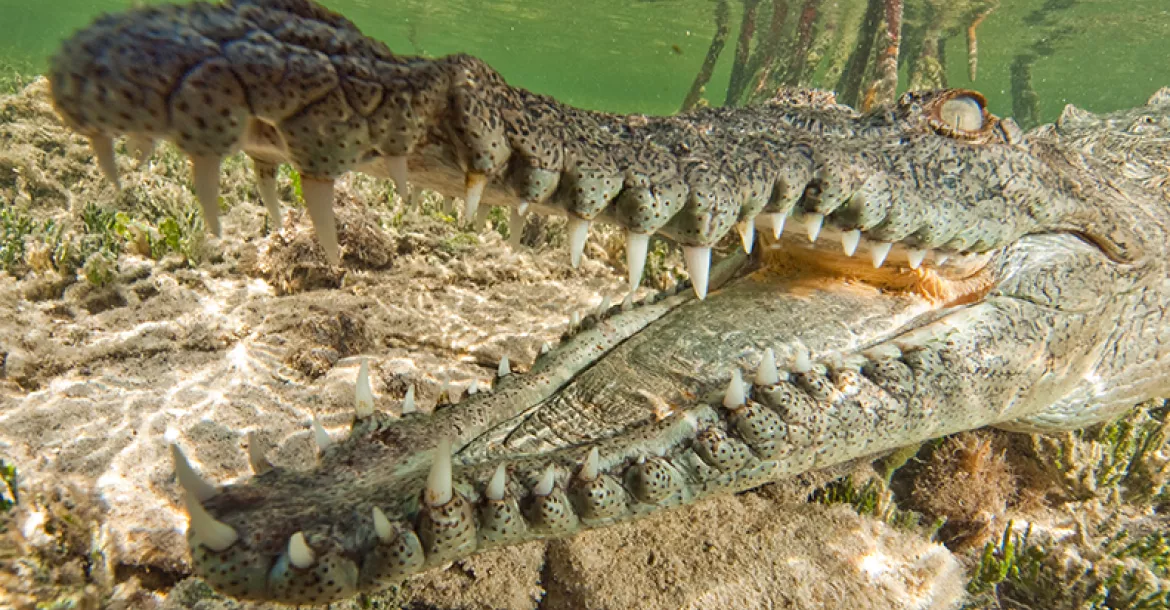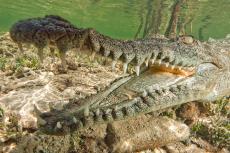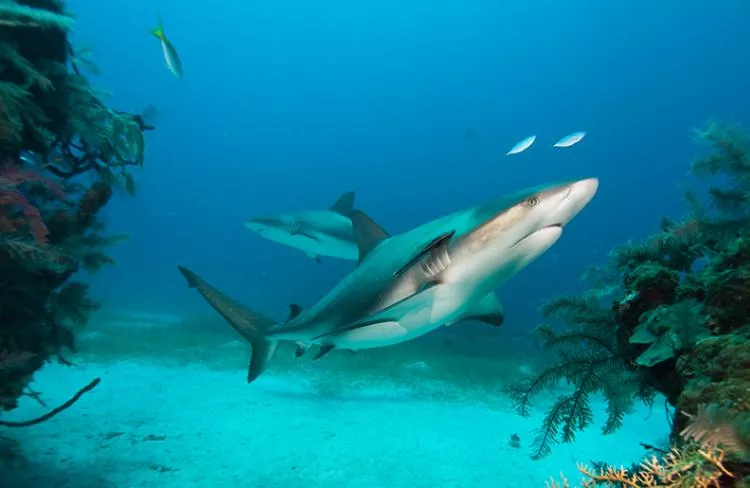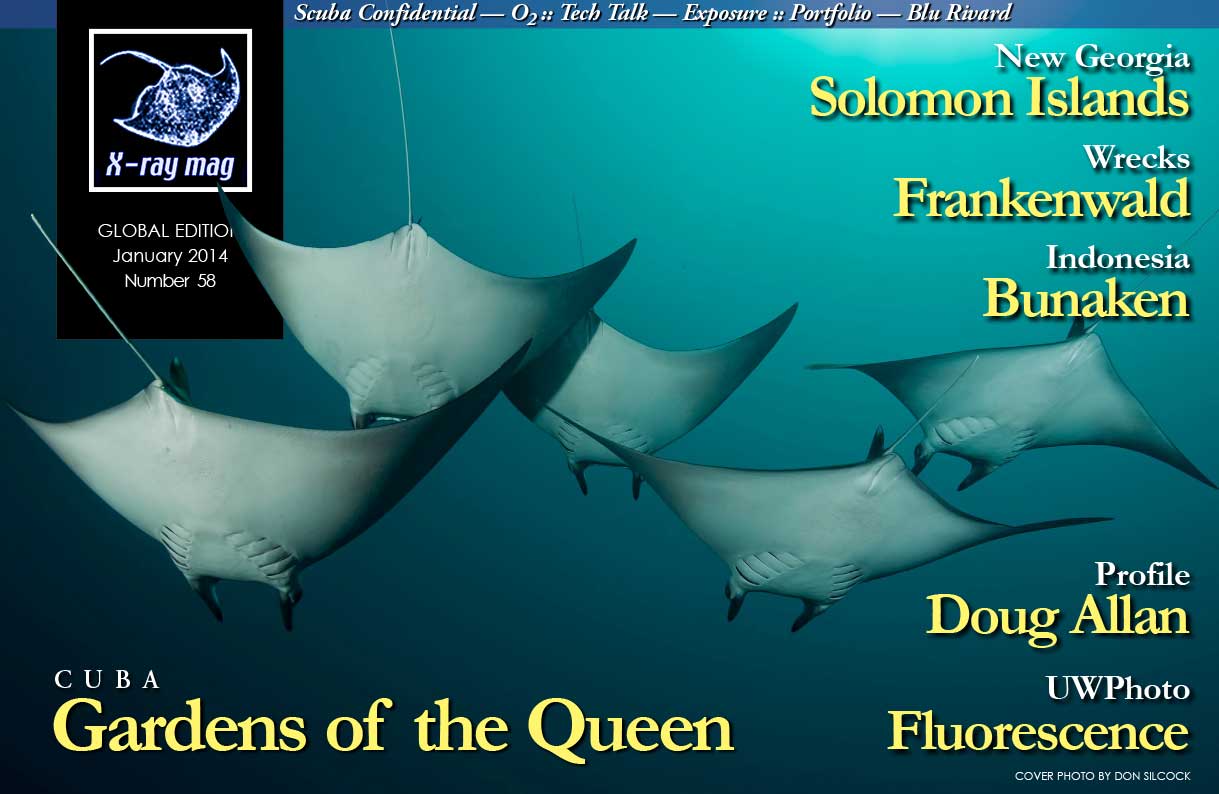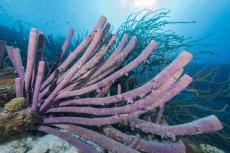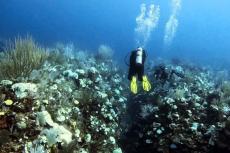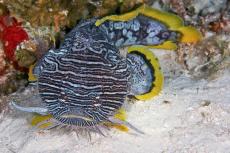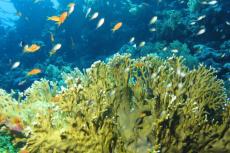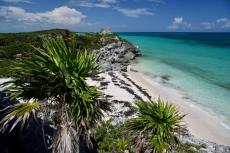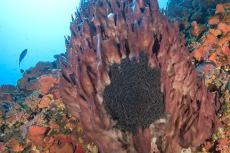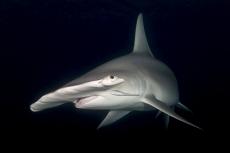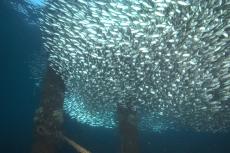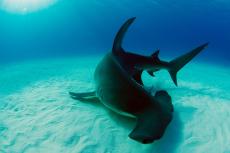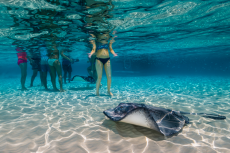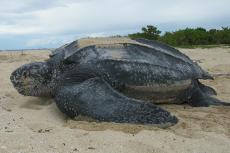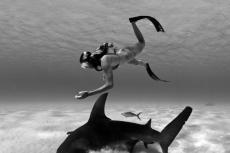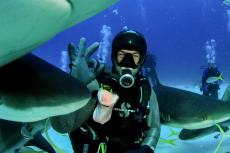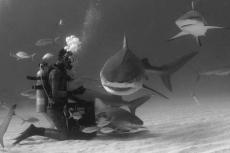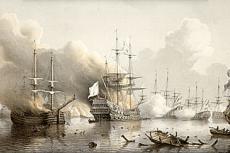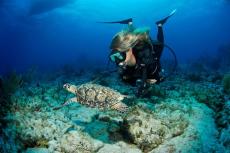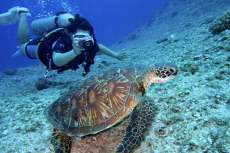The Cuban government is environmentally minded. In 1996, the 837-square-mile marine area and archipelago of Gardens of the Queen located south of the main island of Cuba became a no-take reserve—the largest in the Caribbean—and in 2010 was designated a national park.
Contributed by
Christopher Columbus named this island chain in honor of Queen Isabel of Spain. The Cousteau crew visited here in 1985. It is also rumored that both Castro and Che fished and might even have dove these islands.
The reefs of the park host an exceptionally healthy marine ecosystem. When visiting the dive sites you will witness lush coral forest with abundant fish populations. Many of the dive sites are walls that bottom-out at around 60 to 100-feet (18 to 30m). There are many swim-throughs and over-hangs to explore. Finding large tarpon and nurse sharks in these enclosed areas is common. Along the walls the intrusive visitor from the Pacific, lionfish are spotted in large numbers. By keeping a watchful eye in the sand, large southern stingrays can be found. Taking a closer look at the fauna, tiny feather duster and bristle worms can be spotted on the hard corals. Among the sea fans and sponges a variety of crabs and snails can be observed. Queen conch and other mollusk can be found in large numbers.
Black grouper, Cubera snapper, mahi-mahi and tarpon are just a few of the reef residences that could be studied in open water. It is estimated there are 200 species of fish. This is due to the lack of human development and the fact that the area is protected. The area’s terrain includes islands, reefs and mangroves, which provide habitat allowing marine life to thrive. All of this biodiversity brings in the big boys at the top of the food chain.
One of the most fascinating animals to observe was the American crocodile. The American crocodile is one of the few species along with saltwater crocodile that lives in saltwater. One nicknamed Franco was a regular visitor at Tortuga. This crocodile was about 20 feet (6.1m) long.
In the mangroves, it is possible to get in the water with a few young, small crocodiles. They were around six feet (1.8m) long but had plenty of sharp teeth. Most of their diet consists of fish, reptiles, birds and small mammals. They are not normally aggressive. This was a comforting thought, as we slid into the brackish water with our cameras and snorkels.
We were in only about 3.3 feet (1m) of water. The crocs were actually shy. They would stand on the bottom with their heads at the surface. Only a small profile of the top of their head and eyes was above the waterline.
It took some thrashing about in the water with our hands to get their attention. Once we did, they would come in quickly with mouths open. They seemed to be interested in their own reflections in our domes. We made sure we wore gloves and kept our hands on our housings’ handles behind the domes. Documenting the American crocodile was addicting. Since no gas supply was needed, we spent hours in the water with this intriguing animal.
The critically endangered Nassau and goliath grouper are found in large numbers. Many of these fish are the size of a small car. The area also harbors an abundant population of sharks, including Caribbean reef and silky sharks. Some of them are as large as nine feet (2.7m). A metal box filled with fish is taken onto the dive sites. The idea is to get the sharks in close for study and photographs. The goliath groupers and other marine life also get interested in the metal box. The reef becomes a hub of activity. Sharks, groupers and other fish buzz around the coral in every direction. At the end of the dive, the metal box is opened. The fastest creature takes the prize. The sharks don’t always win.
Not all the action takes place underwater. Cuban iguanas and jutia roam the beaches side by side. Jutias are rodents that are about eight to 18 inches (21 to 46cm) long. Their diet consists of bananas and other fruit. In other parts of Cuba, they are hunted for food. But in the park, they are safe and have no fear of humans.
The Cuban iguana has an average length of 16 inches (40cm). Their diet consists of leaves, flowers and fruits. Young iguanas eat insects and shift to vegetation as they age.
Rural towns and urban life
Cuba has many picturesque small villages and farmlands along the country’s routes. Music and performance is an important part of Cuban culture. The city streets are filled with musicians and performers.
Wandering the streets of Havana is like entering a time machine. The most noticeable sight is the abundance of American cars from the 1950s. Since the 1962 embargo, new American cars cannot be sold in Cuba. All the American cars in Cuba were acquired and registered before the embargo. Cuban ingenuity adapting household products and Soviet replacement diesel engines keep these vehicles on the road. Known as Yank tanks, or máquina, many of these classic cars are now taxis.
Much of the architecture in Old Havana imitates styles from Madrid, Paris, Vienna and other parts of Europe. Many of these proud buildings are deteriorating due to the lack of money for maintenance. When walking down the promenade Paseo del Prado, the crumbling structures sitting next to recent renovated buildings can be observed.
Crime rates in Havana are lower than most major cities. This is because the National Revolutionary Police Force acts strongly against any crime. Homes are wide open without locks. As you walk the streets, it is impossible not to peek inside and get a glimpse of these people’s lives, and it is common for locals to come up and say hello. ■

